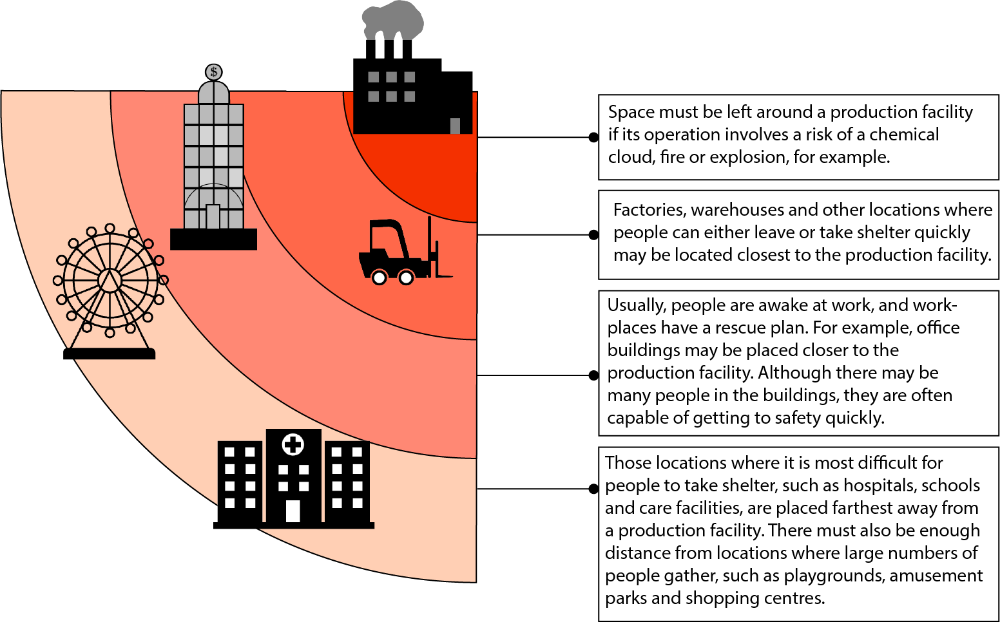How does a factory in the neighbourhood impact the use of the property?
The proximity of a factory may affect activities that may be planned in the area. Chemical and explosives factories are placed so that any major accident will cause as little damage as possible. Safety distances affect the kinds of activities that nearby properties may be used for.
Safety distances mitigate the risk of a major accident. For example, a property planned for residential use may not contain accommodation or a day care if it is close to a factory. Tukes determines the safety distances, and a consultation zone is established around a site supervised by Tukes. The planner requests a statement from Tukes for planning carried out in the consultation zone.
If you are wondering whether planning will allow the operation intended:
1. Contact the municipality and ask whether it is possible to begin the intended operation on the property.
2. Where necessary, the municipality will request a statement from Tukes and the rescue authority for altering the plan.
3. In its statement, Tukes also takes into account plans to expand operation at the supervised site, since this may also affect the permissible uses of the property.
What can be planned and where?

What kind of danger can possible accidents pose?
Risks related to accidents in factories include chemical clouds, fire, explosions or environmental disasters. In addition to people and buildings, the safety distances protect nature, groundwater, sites of historical value and infrastructure, such as major traffic routes or energy supply.
Health hazard
Chemical emissions may cause health hazards. The safety distance is affected by the spreading rate and size of a possible chemical cloud, the exposure period and the number of people.
Pressure wave
Pressure waves are created in explosions. For example, chemical containers, liquid gases and certain types of fertiliser may explode.
Thermal radiation
Fires generate thermal radiation, and if the thermal radiation is too strong, it will expand the fire and cause burns. Readily combustible sites are taken into account when determining safety distances.
Environmental hazard
A major accident may also impact nature. The risk assessment takes into account the severity and duration of any damage to the environment that a possible accident would cause.